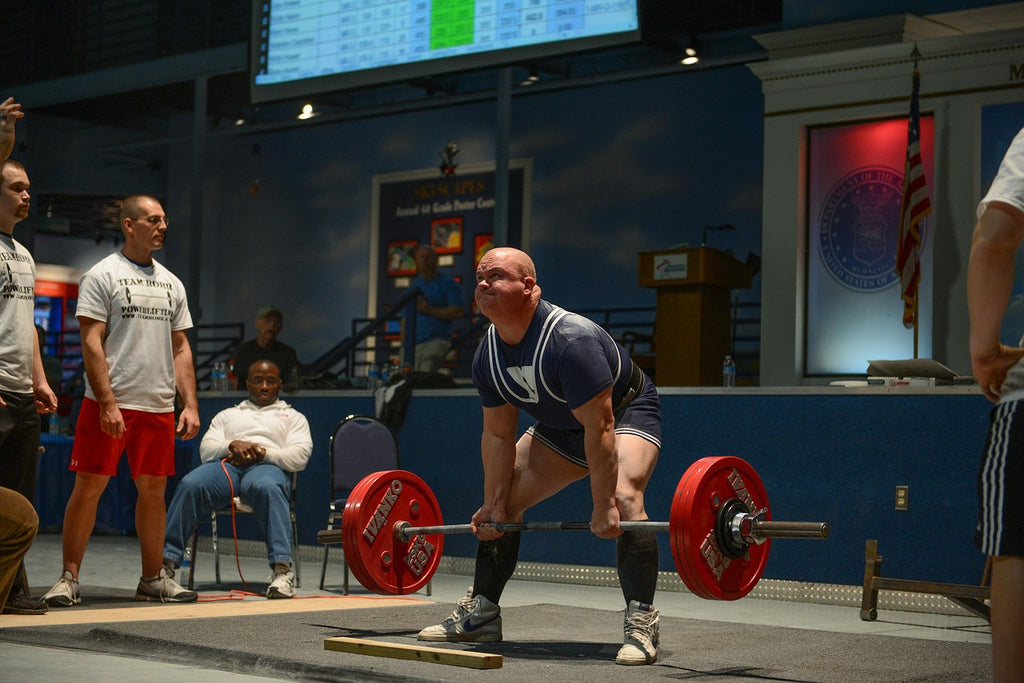Want to lift like the Olympic lifters?
How do I do it and how can I avoid injury?
Have you being watching the Olympics? Then you have likely seen the Olympic weight lifting.
Whilst Crossfit and Olympic lifting are becoming increasingly popular as part of an exercise regime, injuries associated with these activities are also increasing.
It is important to check with your Physiotherapist before you start Crossfit or Olympic lifting to ensure you are physically ready and able.
The deadlift is one of the most common exercises and here we will go through correct technique, common faults, causes of these faults and how to fix them.
Deadlift:
Correct Technique:
SETUP:
Foot Position:
Feet should be hip width apart, just narrower than shoulder width
Feet can be turned out slightly, no more than 15°
The bar should be sitting over your midfoot (halfway along the sole of your shoe)
Feet should remain flat on the floor throughout the lift
Hand Position:
Hands should be just wider than shoulder width, generally around a thumb length from the start of the grip on barbell
Arm Position:
Wrists neutral (not bent forwards or backwards)
Elbows straight
Activate your lats (latissimus dorsi) by trying to ‘pull’ the bar apart when gripping. Or like your squeezing an orange in your armpit
Spine Position:
NEUTRAL SPINE – no rounding or arching through mid (thoracic) or lower back
Trying to ‘pull’ the bar apart will help maintain a neutral thoracic spine
Head neutral – no looking up or down
Hip and Knee Position:
Hips should be above knee level
When your hips are in the correct position, your shoulders should be in front of the bar
Trunk should be at an angle of 30° to the horizontal
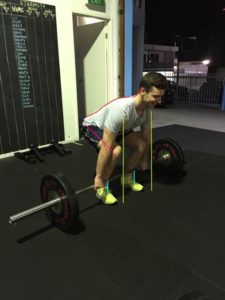
ACTION:
Deadlifts are a HIP hinge movement
The movement is slow from the ground – take up the slack in the bar before bringing it off the ground
Drive through your heels, pushing them against the floor as you bring the bar to your knees
Move the bar around the knees, keeping it close to your legs
The final movement is thrusting your hips forward to lock out the weight as you come into upright
The bar should move in a vertical line as you bring it off the ground
Spotlight
Did you know that a back disc injury is the most common injury we see at the clinic from a deadlift!
Common Faults:
Common Faults:
Arching your back forwards or backwards:
It is very important to maintain a neutral spine! If you arch your back, you have a very high risk of damaging your lower back. This is one of the most common injuries we see at All Care Physiotherapy from our patients who do deadlifts.
Having the bar too far from your body:
This puts extra stress on your lower back. Make sure that you can roll the bar up your shins and thigh as close to your body as possible.
Starting with your hips below your knees:
The starting position for a deadlift is NOT a squat. Your hips should be above your knees, otherwise the bar will hit your shins and knees.
Pulling the bar rather than pushing through your feet:
This also increases the stress on your lower back. Push with your legs to use your leg muscles (glutes and hamstrings) when deadlifting.
It is very important to ensure that your technique, or form, is correct prior to adding weight to your deadlifting. Your All Care Physiotherapist is able to analyse your deadlift technique and correct this where necessary to ensure your risk of injury is minimised.
What You Can Do to Prepare for Deadlifting:
There are a number of exercises that can be completed prior to doing deadlifts:
Bridging:
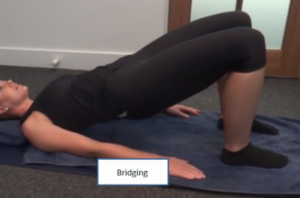
This is a great exercise for simulating the hip thrust component of deadlifts
Lying on your back with your knees bent up
Squeeze your glutes and lift your bottom off the floor
Hold for 5s
Rack Pulls:
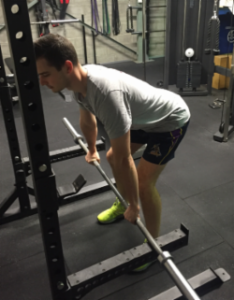
This exercise is similar to a deadlift, however is a smaller movement which results in less demand on your body
Start with the barbell on a power rack rather than the floor
Setup is much the same as for deadlifts
Ensure the bar is over your midfoot, elbows straight, shoulders in front of the bar, neutral spine and hips above knee level
Take up the slack in the bar and thrust your hips forward to lock the weight out as you come into upright
Romanian Deadlifts:
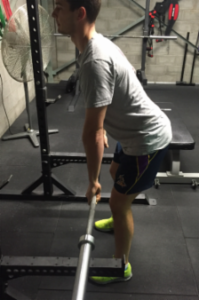
Start with the barbell on a power rack rather than the floor
Do a rack pull so that you are holding the bar in an upright position
Bend your knees slightly
Ensuring you maintain a neutral spine at all times, hinge forwards at your hips to lower the bar along your thighs, past your knees to your mid-shin or until you feel a stretch in your hamstrings
Then, bring the bar up around your knees and thrust your hips forward to come into upright again.








